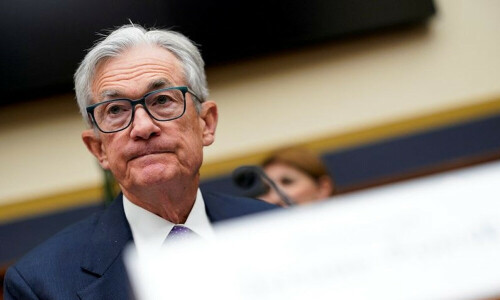Federal Reserve Maintains Interest Rates Amid Economic Uncertainty
The Federal Reserve opted to keep interest rates unchanged on Wednesday, a widely anticipated decision. However, central bank officials signaled their continued expectation of decreasing borrowing costs by approximately half a percentage point before the year concludes. This outlook is shaped by a deceleration in economic expansion and an anticipated moderation in inflation.
After evaluating the implications of the administration’s tariff implementations, Federal Reserve representatives adjusted their inflation forecast upwards for the current year. Their preferred metric for gauging price escalations is projected to reach 2.7% by year’s end, a rise from the 2.5% predicted back in December. It is worth noting that the Federal Reserve aims for a 2% inflation rate.
Simultaneously, the economic growth projection for the current year was revised downward from 2.1% to 1.7%, accompanied by a slight uptick in unemployment by the close of the year.
Policymakers voiced concerns about escalating risks, expressing a broadly shared sentiment that the year’s trajectory remains uncertain.
The Federal Reserve acknowledged heightened uncertainty surrounding the economic outlook. This assessment incorporates the initial phases of the new administration and the introduction of tariffs on imported goods, which White House officials have indicated will eventually extend globally. The Fed has maintained its policy rate within the 4.25%-4.50% band.
Furthermore, the Federal Reserve announced its intention to moderate the ongoing reduction of its balance sheet, a process known as quantitative tightening.
Federal Reserve Governor Chris Waller expressed disagreement with the policy statement due to adjustments in the balance sheet strategy.
Impact of Lower Growth and Higher Unemployment
The anticipated rate projections aligned with financial market expectations leading up to the meeting. They also preserved the Federal Reserve’s overall perspective that a gradual easing of inflation would pave the way for additional monetary policy easing.
Nevertheless, the path ahead might present challenges. Although the statement refrained from explicitly mentioning tariffs, the forecasts indicating higher inflation this year coincide with the unveiling of tariff proposals.
At this juncture, the Federal Reserve appears to be considering the price fluctuations resulting from these import levies as a transient phenomenon rather than a sustained cause of inflationary pressures.
The underlying inflation projections beyond 2025 remained consistent with the December forecasts, anticipating a return to 2% by the end of 2027.
Similarly, the projections for rate reductions extending beyond the current year remained unchanged, reaching 3.1% by the close of 2027, approximating the level regarded as having a neutral impact that neither stimulates nor discourages expenditure and investment.
The Federal Reserve reduced its benchmark interest rate by a full percentage point in the preceding year. However, it has maintained steady rates since December, awaiting further confirmation that inflation will continue its descent and seeking greater clarity regarding the consequences of policies.
In contrast to the promise of an impending economic “golden age” attributed to the push for tariffs, immigration restrictions, and deregulation, the Federal Reserve anticipates growth at 1.7% this year and a modest 1.8% in both 2026 and 2027. The unemployment rate is projected at 4.4% this year and 4.3% in 2026 and 2027. These figures surpass the recent lows and the latest reading of 4.1% recorded in February.
Fed Chair Jerome Powell is scheduled to conduct a press briefing at 2:30 p.m. EDT to elaborate on the latest policy statement and projections.



Comments (0)
No comments yet. Be the first to comment!
Leave a Comment